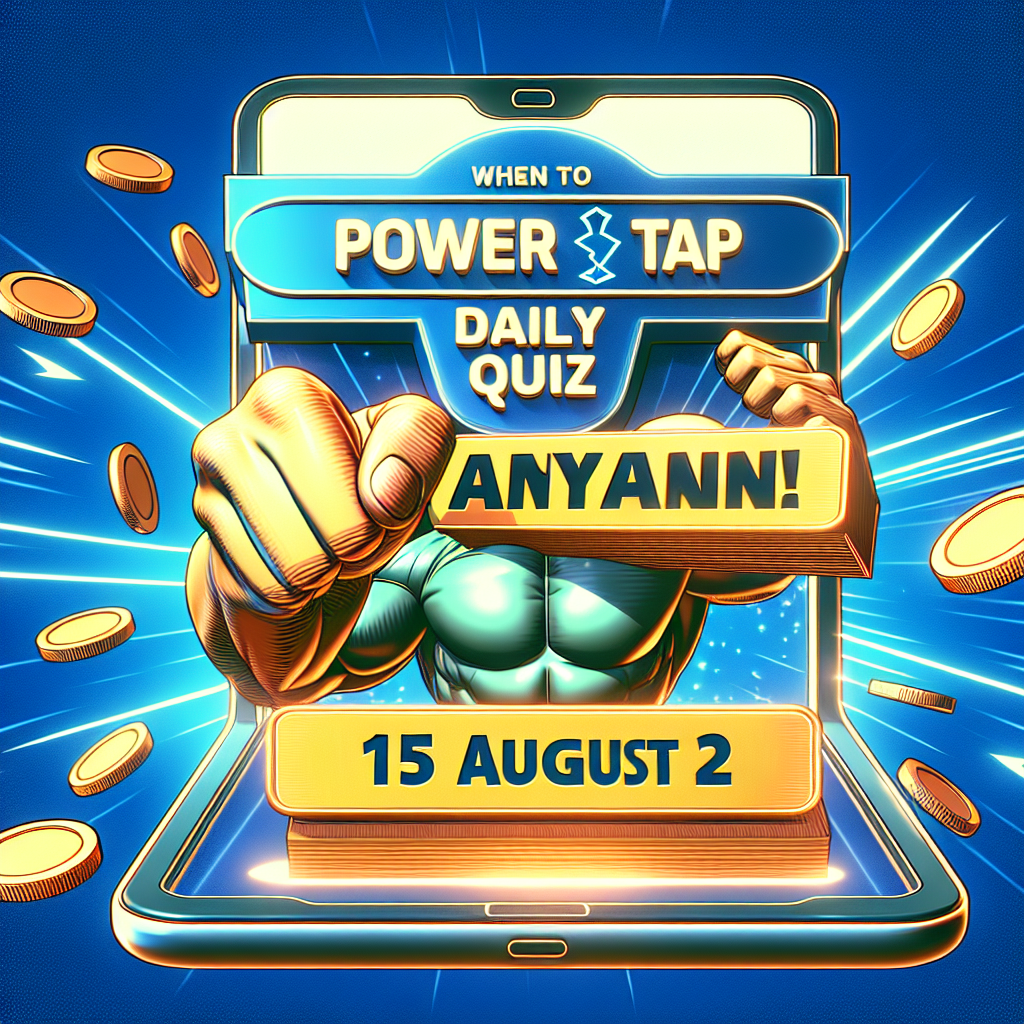How OppiWallet’s virtual and physical cards eliminate the crypto-to-fiat hassle

How OppiWallet’s Virtual and Physical Cards Eliminate the Crypto-to-Fiat Hassle
In today's rapidly evolving financial landscape, the intersection of cryptocurrency and traditional finance is becoming increasingly seamless. OppiWallet is at the forefront of this convergence, offering innovative solutions that eliminate the common hassles associated with converting cryptocurrency to fiat currency. By providing both virtual and physical cards linked directly to crypto wallets, OppiWallet empowers users to spend their digital assets with the same ease and convenience as traditional money.
The Crypto-to-Fiat Conundrum
For many cryptocurrency enthusiasts, one of the biggest challenges has always been bridging the gap between the digital world of crypto and the physical world of everyday transactions. While cryptocurrency adoption is growing, most merchants still operate primarily with fiat currencies like USD, EUR, and GBP. This necessitates a conversion process, often involving exchanges, transaction fees, and waiting times, which can be cumbersome and costly.
The traditional methods of converting crypto to fiat often involve:
- Selling cryptocurrency on an exchange.- Withdrawing the fiat currency to a bank account.
- Waiting for the transaction to clear (which can take several days).
- Paying transaction fees at each step.
- Dealing with potential tax implications.
These steps can be time-consuming and inefficient, hindering the seamless integration of crypto into daily financial activities. OppiWallet addresses these pain points by offering a direct and convenient solution.
OppiWallet's Solution: Virtual and Physical Crypto Cards
OppiWallet's core offering revolves around its virtual and physical cards, which are directly linked to users' cryptocurrency wallets. This allows users to spend their crypto holdings at any merchant that accepts Visa or Mastercard, without the need for manual conversion or lengthy withdrawal processes.
How it Works:
- Seamless Integration: Users connect their existing cryptocurrency wallets to the OppiWallet platform.- Real-Time Conversion: When a user makes a purchase with their OppiWallet card, the necessary amount of cryptocurrency is converted to fiat currency in real-time at the point of sale.
- Global Acceptance: OppiWallet cards are accepted anywhere Visa or Mastercard are accepted, both online and in physical stores.
- Security Features: OppiWallet employs robust security measures, including encryption, two-factor authentication, and fraud monitoring, to protect users' funds and data.
Benefits of Using OppiWallet:
- Convenience: Spend crypto anywhere Visa or Mastercard are accepted without the need for manual conversions.- Speed: Real-time conversion ensures instant transactions.
- Cost-Effective: Potentially lower transaction fees compared to traditional exchange withdrawals.
- Flexibility: Use both virtual and physical cards for online and offline purchases.
- Security: Enhanced security measures protect user funds.
The OppiWallet Experience: A Deep Dive
To truly understand the impact of OppiWallet, let's delve into the user experience and explore the platform's key features.
Account Setup and Wallet Integration:
Setting up an OppiWallet account is a straightforward process. Users need to provide basic personal information and verify their identity to comply with regulatory requirements. Once the account is created, users can link their existing cryptocurrency wallets to the platform. OppiWallet supports a variety of popular cryptocurrencies, including Bitcoin (BTC), Ethereum (ETH), Litecoin (LTC), and others. The wallet integration process is designed to be user-friendly, with clear instructions and support available to assist users.
Virtual Card Activation and Usage:
Once the wallet is linked, users can activate their virtual card instantly. The virtual card details (card number, expiration date, and CVV) are displayed within the OppiWallet app, allowing users to immediately start making online purchases. The virtual card functions just like a traditional credit or debit card, but with the added benefit of being directly linked to the user's crypto holdings.
Physical Card Ordering and Management:
For users who prefer to make in-person purchases, OppiWallet offers a physical card that can be ordered through the app. The physical card is a standard plastic card that can be used at any point-of-sale terminal that accepts Visa or Mastercard. Users can manage their physical card through the app, including activating the card, setting spending limits, and freezing the card if it's lost or stolen.
Transaction Process and Real-Time Conversion:
The transaction process with OppiWallet is seamless. When a user makes a purchase, OppiWallet automatically converts the required amount of cryptocurrency to fiat currency at the prevailing exchange rate. This conversion happens in real-time, ensuring that the transaction is processed quickly and efficiently. Users can view their transaction history within the app, providing a clear record of their spending and conversions.
Security Features and Fund Protection:
Security is a top priority for OppiWallet. The platform employs a range of security measures to protect user funds and data, including:
- Encryption: All sensitive data is encrypted using industry-standard encryption protocols.- Two-Factor Authentication: Users can enable two-factor authentication to add an extra layer of security to their accounts.
- Fraud Monitoring: OppiWallet employs advanced fraud monitoring systems to detect and prevent fraudulent activity.
- Spending Limits: Users can set spending limits on their cards to control their spending and protect against unauthorized transactions.
- Card Freezing: Users can instantly freeze their cards through the app if they suspect any fraudulent activity or if the card is lost or stolen.
Real-World Use Cases
The versatility of OppiWallet makes it suitable for a wide range of use cases. Here are a few examples:
- Online Shopping: Use the virtual card to make purchases on e-commerce websites, pay for subscriptions, and buy digital goods.- In-Store Purchases: Use the physical card to pay for groceries, gas, dining, and other everyday expenses.
- Travel: Use the card to pay for hotels, flights, and other travel expenses while abroad.
- Bill Payments: Use the card to pay utility bills, credit card bills, and other recurring expenses.
- Emergency Funds: Keep a portion of your crypto holdings in OppiWallet as an emergency fund that can be accessed instantly when needed.
The Impact on Cryptocurrency Adoption
OppiWallet's innovative solution has the potential to significantly impact cryptocurrency adoption by making it easier for people to use crypto in their daily lives. By removing the friction associated with converting crypto to fiat, OppiWallet encourages wider acceptance and usage of digital currencies.
Benefits for Merchants:
While OppiWallet primarily benefits consumers, it also indirectly benefits merchants by increasing the pool of potential customers who can pay with cryptocurrency. As more people adopt OppiWallet and similar solutions, merchants will be more inclined to accept cryptocurrency as a form of payment, further accelerating the adoption cycle.
The Competitive Landscape
OppiWallet is not the only player in the crypto card market, but it distinguishes itself through its focus on user experience, security, and seamless integration with existing cryptocurrency wallets. Other companies offering similar services include:
- Coinbase Card: A debit card linked to a Coinbase account, allowing users to spend their crypto holdings.- Binance Card: A debit card linked to a Binance account, offering similar functionality.
- Crypto.com Card: A range of debit cards with varying rewards and benefits, linked to the Crypto.com platform.
OppiWallet differentiates itself by offering a more agnostic approach, allowing users to connect to a variety of different cryptocurrency wallets rather than being tied to a specific exchange or platform.
Looking Ahead: The Future of Crypto-to-Fiat Solutions
The market for crypto-to-fiat solutions is expected to continue to grow as cryptocurrency adoption increases. OppiWallet is well-positioned to capitalize on this trend by continuing to innovate and improve its platform.
Potential Future Developments:
- Integration with More Cryptocurrencies: Expanding the range of supported cryptocurrencies to cater to a wider audience.- Enhanced Rewards Programs: Offering cashback, discounts, and other rewards to incentivize usage.
- Cross-Border Payments: Facilitating seamless cross-border payments with lower fees and faster transaction times.
- Decentralized Finance (DeFi) Integration: Integrating with DeFi protocols to allow users to earn interest on their crypto holdings while still being able to spend them with their OppiWallet card.
The Regulatory Landscape
The regulatory landscape for cryptocurrency is constantly evolving, and OppiWallet must navigate these complexities to ensure compliance. Key regulatory considerations include:
- Know Your Customer (KYC) and Anti-Money Laundering (AML) Regulations: OppiWallet must comply with KYC and AML regulations to prevent fraud and money laundering.- Data Privacy Regulations: OppiWallet must protect user data in accordance with data privacy regulations such as GDPR.
- Financial Services Regulations: OppiWallet must comply with financial services regulations in the jurisdictions where it operates.
OppiWallet is committed to complying with all applicable regulations and working with regulators to ensure a safe and secure environment for its users.
User Testimonials and Reviews
The true measure of any product is the satisfaction of its users. Here are some hypothetical user testimonials and reviews highlighting the benefits of OppiWallet:
"OppiWallet has made it so easy for me to spend my crypto. I no longer have to go through the hassle of selling on an exchange and withdrawing to my bank. I just use my OppiWallet card like any other debit card." - John D.
"I love the security features of OppiWallet. I feel confident that my funds are safe, and I appreciate the ability to freeze my card instantly if I ever need to." - Sarah M.
"OppiWallet has been a game-changer for me. I can now use my crypto to pay for everyday expenses without any hassle. It's the future of finance!" - Michael B.
Technical Analysis of Bitcoin (BTC) and Ethereum (ETH)
As of July 1, 2025, Bitcoin (BTC) is trading at $106,431, reflecting a slight decrease of 0.012% from the previous close. Source: Binance
Stock market information for Bitcoin (BTC)
- Bitcoin is a crypto in the CRYPTO market.- The price is 106431.0 USD currently with a change of -1321.00 USD (-0.01%) from the previous close.
- The intraday high is 107937.0 USD and the intraday low is 106397.0 USD.
Ethereum (ETH) is priced at $2,451.75, down 0.0038% from the previous close. Source: Binance
Stock market information for Ethereum (ETH)
- Ethereum is a crypto in the CRYPTO market.- The price is 2451.75 USD currently with a change of -9.30 USD (-0.00%) from the previous close.
- The intraday high is 2519.37 USD and the intraday low is 2443.22 USD.
Recent Price Action and Trends:
Bitcoin (BTC): Bitcoin has experienced a period of consolidation after a significant rally in the first half of 2025. The price has been trading within a relatively tight range of $100,000 to $110,000 for the past few weeks. This consolidation phase suggests that the market is taking a breather before potentially making its next move. Key events influencing the price include institutional adoption and regulatory developments.
Ethereum (ETH): Ethereum has mirrored Bitcoin's consolidation but with slightly more volatility. The transition to a more energy-efficient consensus mechanism continues to be a positive catalyst, but regulatory uncertainties linger. ETH has been trading between $2,300 and $2,600, showing similar consolidation patterns to BTC.
Technical Chart Patterns:
Bitcoin (BTC): A symmetrical triangle pattern has been forming on the daily chart. This pattern is typically a continuation pattern, meaning that if it breaks upwards, it could signal a continuation of the previous bullish trend. Conversely, a breakdown below the lower trendline could indicate a potential bearish reversal.
Ethereum (ETH): A potential ascending triangle is forming on the Ethereum chart. This is typically a bullish pattern, suggesting that the price is likely to break upwards. The upper resistance is around $2,600, and a breakout above this level could lead to further gains.
Key Support and Resistance Levels:
Bitcoin (BTC):
- Key Support Levels: $100,000, $95,000- Key Resistance Levels: $110,000, $115,000
Ethereum (ETH):
- Key Support Levels: $2,300, $2,200- Key Resistance Levels: $2,600, $2,750
Technical Indicators Analysis:
Moving Averages:
Bitcoin (BTC): The 50-day moving average is currently above the 200-day moving average, indicating a bullish trend. However, the price is currently trading near the 50-day moving average, suggesting that the trend may be weakening.
Ethereum (ETH): Similar to Bitcoin, the 50-day moving average is above the 200-day moving average, but the price is also close to the 50-day moving average, indicating a potential weakening of the uptrend.
Relative Strength Index (RSI):
Bitcoin (BTC): The RSI is currently around 50, indicating neutral momentum. This suggests that the price is neither overbought nor oversold.
Ethereum (ETH): The RSI is also hovering around 50, indicating neutral momentum.
MACD (Moving Average Convergence Divergence):
Bitcoin (BTC): The MACD line is close to the signal line, indicating a potential crossover. A bullish crossover would suggest a potential uptrend, while a bearish crossover would indicate a potential downtrend.
Ethereum (ETH): The MACD is showing a similar pattern to Bitcoin, with the MACD line close to the signal line.
Trading Volume:
Bitcoin (BTC): Trading volume has been relatively low during the consolidation phase, suggesting a lack of strong conviction from either buyers or sellers.
Ethereum (ETH): Similar to Bitcoin, trading volume has been subdued during the consolidation period.
Fibonacci Retracement Levels:
Bitcoin (BTC): Considering the recent swing high around $115,000 and swing low around $90,000, the 38.2% Fibonacci retracement level comes in around $100,500, which has acted as a support area.
Ethereum (ETH): With a swing high of $2,700 and a swing low of $2,000, the 38.2% retracement level is around $2,266, which has been tested as a support zone.
Market Sentiment and Influencing Factors:
The overall market sentiment is cautiously optimistic. While there is still uncertainty regarding regulatory developments, the continued adoption of cryptocurrency by institutional investors is a positive sign. Recent news includes:
Recent analyses highlight significant trends in the cryptocurrency market:
1. Bitcoin Treasury Strategies: An increasing number of publicly traded companies are allocating portions of their cash reserves to Bitcoin. This strategy aims to hedge against inflation and attract tech-savvy investors. However, analysts caution that Bitcoin's price volatility could pose risks, potentially forcing companies to liquidate holdings under financial pressure. (apnews.com)
2. Regulatory Developments: States across the U.S. are intensifying regulations on cryptocurrency ATMs due to a surge in fraud, particularly targeting seniors. Measures include stricter oversight, daily limits, fraud warnings, and licensing systems. These actions reflect a broader trend of increasing regulatory scrutiny in the cryptocurrency sector. (axios.com)
These developments underscore the dynamic nature of the cryptocurrency market, influenced by both corporate strategies and regulatory changes.
Potential Trading Strategies:
Based on the current technical and fundamental outlook, traders might consider the following strategies:
- Breakout Trading: Wait for a breakout above the symmetrical triangle pattern in Bitcoin or the ascending triangle pattern in Ethereum before entering a long position.- Range Trading: Trade within the current consolidation range, buying near support levels and selling near resistance levels.
- Long-Term Investing: Accumulate Bitcoin and Ethereum during periods of price weakness, with a long-term investment horizon.
Short-Term Price Analysis:
Bitcoin (BTC):
- Bullish Scenario: A breakout above $110,000 could lead to a test of the $115,000 resistance level.- Bearish Scenario: A breakdown below $100,000 could lead to a test of the $95,000 support level.
Ethereum (ETH):
- Bullish Scenario: A breakout above $2,600 could lead to a test of the $2,750 resistance level.- Bearish Scenario: A breakdown below $2,300 could lead to a test of the $2,200 support level.
Relevant YouTube Videos
Here are two relevant YouTube videos providing price analysis:
Video 1: Data vs. Findings vs. Insights Watch Video
Video 2: Data Analyst on How to Turn Business Metrics to Insights Watch Video
Conclusion
OppiWallet is revolutionizing the way people interact with cryptocurrency by providing a seamless and convenient way to spend their digital assets in the real world. By offering both virtual and physical cards linked directly to crypto wallets, OppiWallet eliminates the hassle of converting crypto to fiat currency, making it easier than ever to use crypto for everyday transactions. However, as with any investment, cryptocurrency trading involves inherent risks, and it's crucial to conduct thorough research and employ prudent risk management strategies.
It is important to remember that the cryptocurrency market is highly volatile, and prices can fluctuate significantly in a short period. Before making any investment decisions, it's essential to consult with a qualified financial advisor and understand the potential risks involved. Diversification is key, and you should never invest more than you can afford to lose. Always conduct your own due diligence and stay informed about the latest developments in the cryptocurrency market.









